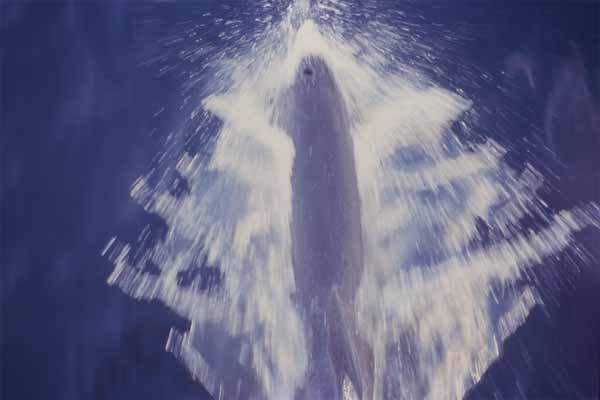DOLPHINS
Arguably the best known sea mammals, dolphins hold a special place in our hearts. In the Galapagos, the most commonly seen species are bottle-nosed dophin (Tursiops truncatus) and common dolphin (Delphinus delphis), pictured below. Sometimes the orca, or killer whale is also seen. This is the biggest dolphin species. The biggest toothed whale is the sperm whale, occasionally seen in Galapagos waters. Dolphins are mammals, and need to breathe air every few minutes. All dolphins navigate and find prey by echolocation. There is no doubt they are highly intelligent. Although experts dispute the extent of their intelligence, it is likely related to their high degree of social activity. |
Click below to see the photos and information on dolphins:
dolphin bowriding
dolphins leaping
DOLPHIN BOWRIDING
Click image to return to gallery
Bottle-nosed dolphins are the species most often encountered by visitors as this species commonly likes to swim up against the bow of ships. Why the animals do this is unclear, but they seem to enjoy it. Usually a small pod races up to the boat, and one or two ride the pressure wave of the bow. They do this for a minute or two, and then swap places with others in the pod. If you listen very carefully you can hear their high-pitched calls. In the above picture the blowhole opens as the dolphin surfaces to take a breath. |
DOLPHINS LEAPING
Click image to return to gallery
The common dolphin is aptly named. It is usually seen in large pods but the size of pod in the above photograph was exceptional. It comprised at least 1,000 individuals, perhaps as many as 1,500. The mass of churning water created by their passage seemed to extend halfway across the Bolivar Channel, between Fernandina and Isabela, which can be seen in the background. We can tell these are common dolphins by the distinctive light underside and dark dorsal side. |
Learn about dolphin natural history
next photos
|
|---|



